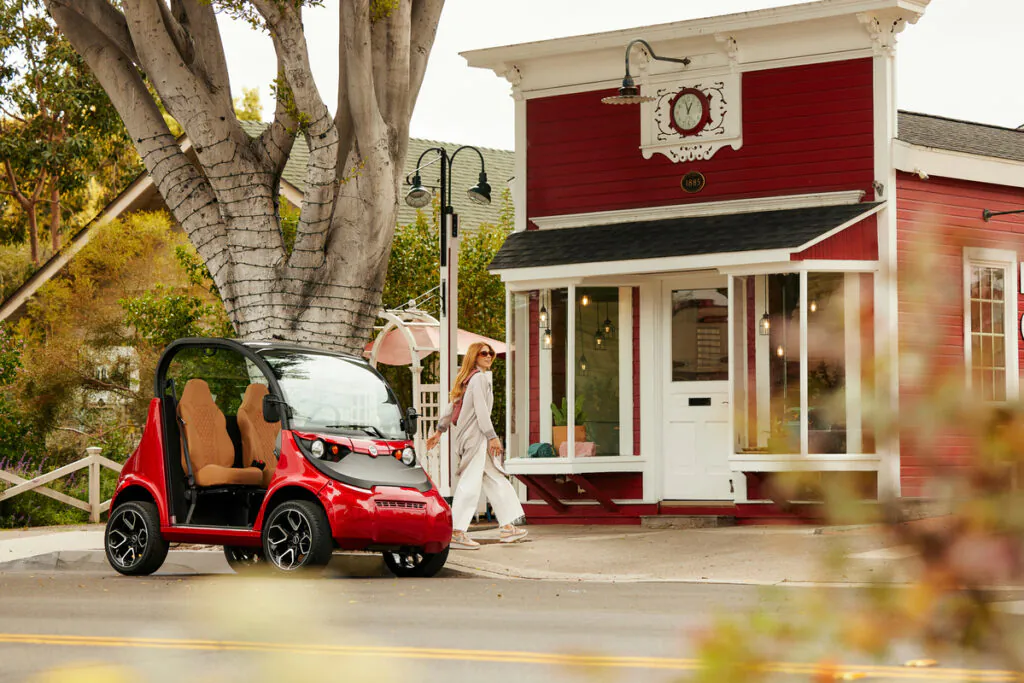A Small, Slow EV That Has Found an Expanding Niche
You don’t need a high-speed sports car or heavy-duty truck when driving around your neighborhood. Instead, you can get by with a low-speed vehicle like a golf cart or bicycle. What if you took it to the next level with electrification?
Global Electric Motorcars (GEM) has pioneered neighborhood electric vehicles (EVs), demonstrating a prosperous past and promising future.

What’s the GEM Car?
While they look like golf carts, GEM’s electric cars stand out among small vehicles. These machines make local transportation safe and sustainable with battery power and low speeds. The batteries mean they have zero emissions and are better for the environment than gas-powered cars or golf carts.
GEM’s four EV models suit multiple needs, depending on your family or business. For instance, the GEM e2 is the smallest and seats one or two people. If you need more space, the GEM e6 seats up to six people and looks like a shuttle bus. The company also makes work trucks to help businesses with microtransit needs.
Waev Inc. owns GEM following a 2021 purchase from Polaris. The buyout also included Taylor-Dunn, an EV manufacturer focusing on industrial EVs. While it has a bright future, the GEM lineup has come a long way since its start 30 years ago.

Where Did the GEM Car Come From?
GEM started in 1992 when a group of engineers left General Motors (GM) to form a company. After six years, they produced a purpose-built EV at the beginning of the modern electric age, when there was low demand for few electric cars on the market. In 1998, GEM’s machine rolled off its North Dakota production line as the first street-legal low-speed vehicle (LSV) in the U.S.
The first GEM vehicle had its speed capped at 25 mph to meet the LSV regulations. The original GEM had lead acid batteries boasting only 48 volts. However, its slowness filled a particular need. GEM designers wanted to bridge the gap between golf carts and regular cars and bring the electric mobility into the modern era.
GEM’s low-speed cars were influential in the 1990s, as the National Highway Traffic Safety Administration (NHTSA) created a new LSV category. Following this change, you could drive GEM machines on streets with a speed limit of 35 mph or lower. These cars attracted the attention of the auto industry and led to the purchase of GEM by DaimlerChrysler. The GEM became the auto company’s main tool for complying with the state of California’s zero-emission vehicle mandate, although it also produced some full-electric models.
What’s the GEM Car’s Future?
Since creating the first car, GEM has produced over 50,000 units and made itself the world’s LSV leader. While ownership has changed hands a few times, the company hasn’t stopped innovating to improve its vehicles. For instance, the 2023 models included solar panels to improve battery performance by 40%.
In 2024, GEM improved its lineup to enhance the driving experience. Now, you can get lithium-ion batteries with five times more battery life than its previous absorbed glass mat (AGM) batteries. Another convenience is an onboard charger, letting you connect to public charging stations.
GEM’s future includes further blurring the lines between golf carts and regular cars. While traditionally for personal use, you may see these vehicles in the rideshare industry. Dayton, Ohio, residents have proposed using GEM cars for transportation services to welcome visitors. Proponents say this idea could boost sustainability and connectivity for the region.

A GEM in the Rough
EVs can be pricey because of high component and production costs and the overhead of a large corporation. However, GEM takes a different approach with its smaller neighborhood cars. Their purpose is not to replace EVs, but take the place of many trips you might take in a $40,000, 4,300-pound vehicle. These machines have come a long way since 1998 and have a bright future.

3 thoughts on “History of the GEM Car and a Look at Its Future”